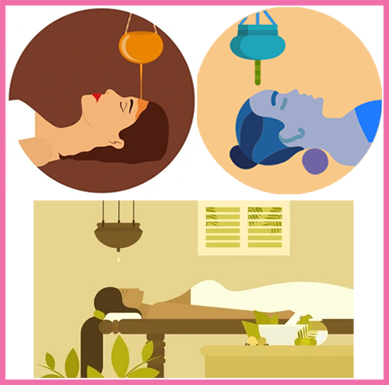7:00 - 19:00
Sun - Fri

Learn About Shirodhara
Shirodhara comes from the two Sanskrit words “shiro” (head) and “dhara” (flow). It’s an Ayurvedic healing technique that involves having someone pour slowly and steadily dripping medicated oil or other liquids — usually oil, milk, buttermilk, or water — onto your forehead. It’s often combined with a body, scalp, or head massage. It focuses on rebalancing the life forces, called doshas, within our body.
Treatment usually starts with aromatherapy and a bone and hand massage to prepare the body. Hot herb oil is then inserted into a constant current on the pan for about 35 to 60 minutes, nerve knots are stimulated and mental clarity is promoted. After the flow of oil, a moment of silence is encouraged, and then increases the exemption for a head and skull massage.
Shirodara is an Ayurvedic medicine that involves pouring hot oil or other liquid on the forehead into a stable stream. This practice is known for its quiet effects, which helps to reduce stress, anxiety and insomnia, and promote general relaxation.
Shirodhara can help soothe the hypothalamus, which activates the regulation of the pituitary gland. It also works in reducing elevated serotonin levels and stress hormones such as noradrenaline and adrenaline, to effectively manage stress.
Shirodara is a comprehensive treatment that not only addresses physical diseases, but also promotes mental welfare, which is a valuable practice in Ayurvedic medicine.
No specific preparation is necessary, but the mentality of relaxation can increase the experience. For maximum benefits, it is recommended to release shodhra oil in the hair for 2 to 24 hours after treatment. A warm water bath can be taken after treatment to clean the hair.
Those with uncontrolled high blood pressure, epilepsy, or a history of head injuries should also avoid Shirodhara. Additionally, pregnant women should consult with their healthcare provider before undergoing the treatment.
Back